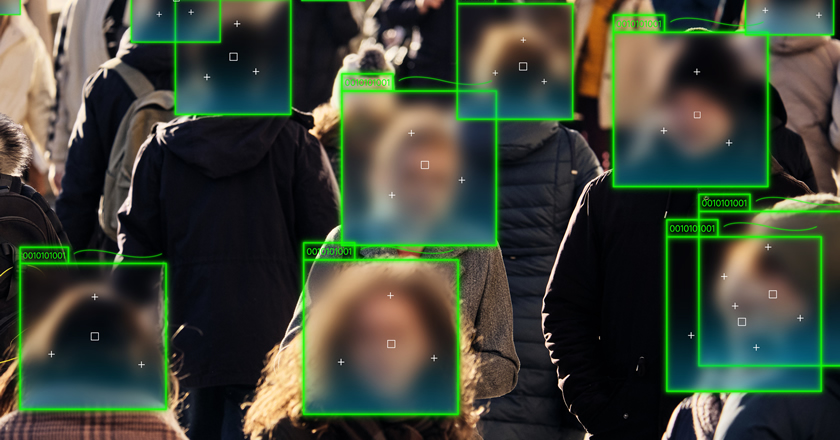The use of facial recognition cameras is controversial
The spread of facial recognition cameras comes from the improvements in camera technology and advances in AI and other technologies that analyze the huge amount of facial image data accumulated. As a result, facial images are now used for various purposes.
On the other hand, new problems have arisen along with improvements in technology. It is privacy issue. For example, the biometrics technology that identifies biometric features data, such as positional relationships the eyes, nose, and mouth of a face, makes it possible to identify and track individuals.
In Japanese regulation, these machine-readable features obtained from facial images are classified into the personal identification codes, which include social security number called “My Number”. Namely, facial images are personal information.
While a user authentication using with a facial recognition camera for access control for a room is very convenient, note that such services acquire the user’s personal information.
Therefore, companies that acquire facial images are required to fulfill their regal obligations as a business operator handling personal information, such as notifying and warning that a facial recognition camera is operating and taking security management measures for the personal data they hold.
However, even if operators follow these rules, it cannot be said that we users have no anxiety at all, can it?
Actually, in 2021, it was reported that many facial recognition cameras installed in station premises by JR East detected suspicious people and people with prison records, and this became a big problem.
In fact, JR East consulted with the Personal Information Protection Commission in advance, and confirmed that it followed all legal obligations, and steps are in a trouble-free manner.
After the news report, there were various arguments for and against the operation. Finally, JR East decided to abandon it, judging that there was no social consensus.
While there was the positive opinion that it was a necessary effort to protect the safety of the railway, it seems that the main factor was the fear that our facial images might be registered in the database of suspicious people.
Behind this, I think there is a sense of uneasiness against new technologies and systems that are starting to spread, and a lack of trust of the companies that utilize them and the government and organizations that manage their utilization.
There are some countries where surveillance cameras are installed all over the streets, and other countries where services such as facial recognition payment are being promoted, whereas there are some countries that prohibit using facial recognition for investigation in public facilities, like some states in the United States. Also in the EU, the regulation of facial recognition cameras varies slightly from country to country, with some considering measures to regulate biometric investigations.
Japanese laws and regulations are based in part on the EU’s way of protecting human rights.
However, what if the detection of facial images by facial recognition cameras is illegal and what if all use of facial images are banned? I don’t think it is practical.
Of course, protecting individual rights is very important. On the other hand, it is also very valuable for us citizens to successfully introduce these new technologies and realize a smart society.
For example, obtaining personal information without the consent of the individual or sharing it with a third party is illegal, and discrimination based on estimated gender or race must violate human rights. These behaviors need to be regulated.
However, anonymized personal data, called an anonymously processed information, or in the form of attribute data or the statistics, which cannot be linked to a specific individual, are no longer personal information. Such anonymously processed information can be used in various fields.
We should come up with rules for using big data together
Our research team is conducting research to predict the risk of adult diseases from an anonymously processed information based on information on medical checkups and health insurance claims.
In order to conduct such research, researchers had to obtain the consent of individuals and investigate on his or her health condition and lifestyle continuously over a long period of time.
Nowadays, digital data on medical checkups and health insurance claims are available. Of course, personal information cannot be seen by third parties. But once it is anonymized and converted to non-personally identifiable data, it can be used for medical research.
In fact, we were able to analyze how various lifestyle factors, such as physical inactivity, can lead to a risk of disease. We believe that further analysis can provide more detailed information on disease prevention.
That research is contribution to preventive medicine has also made significant progress for the first time by using big data which is accumulated personal information.
In light of this, the establishment of protocols and rules that give back such data to society is important, in conjunction with the protection of personal information and human rights, rather than being blindly afraid that personal information might be compromised or abused.
So instead of leaving such rulemaking to some people in government and legal experts, it is important that we citizens take an interest, understand how big data and personal information are protected, and ascertain which business operators handle the data correctly. Then having the ability to think for ourselves about what our information we should permit to use is also necessary. Expressing opinions and participating in discussions are very important.
Next, we will discuss malware that threatens the realization of a smart society.
Information noted in the articles and videos, such as positions and affiliations, are current at the time of production.


